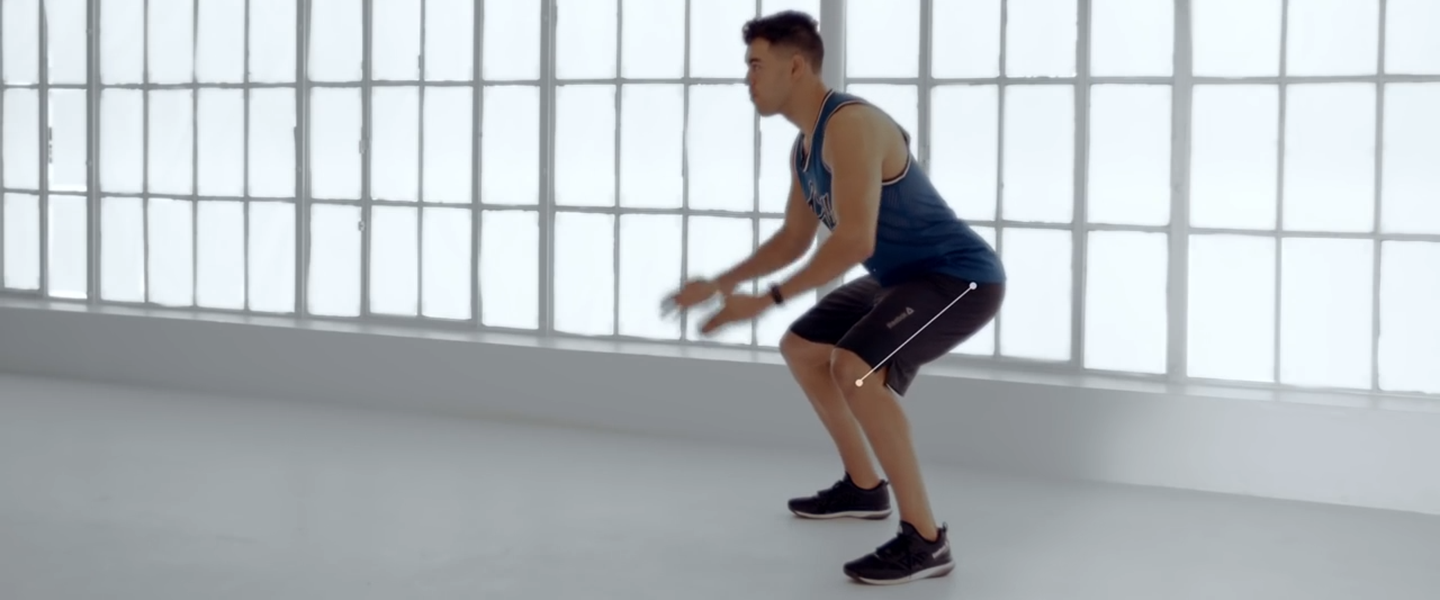

If the athlete needs to hesitate and recalibrate before jumping a second time, this will defeat the overload principle and undermine the value of the drill. The athlete should be able to touch down after the jump and immediately take off again.
Tuck jumps. how to#
Too much resistance can interfere with the athlete’s jumping technique and prevent them from learning how to jump higher. The partner should pay close attention to the level of resistance in the cord while the athlete is standing still-the cord should not be too slack or loose, and it also should not be stretched tightly to the floor. When the cord is attached to the athlete, the anchoring partner can stand behind him or her and hold the stretch cord against the floor with one foot. When the athlete jumps, the pressure of the cord should be applied directly to the center of gravity, not to the side and not too high on the torso. Then the Reactive Stretch Cord can be attached to the O ring which should be centered just above the small of the back. Athletes can attach the strap around the waist so it fits snuggly and doesn’t slide or shift during the jump. The set up for this drill is very simple, and the entire exercise will require only a Kbands Reactive Stretch Cord, a small area of space in the gym or on the field, and a partner or coach to anchor the Reactive Stretch Cord and provide guidance and stability during the jump.īefore beginning this vertical workout, athletes will need to warm up, stretch, and attach the Reactive Stretch Cord to the body at the level of the center of gravity. Resisted Vertical Tuck Jumps: How to Jump Higher Athletes and coaches can observe the video for help with the set-up.

Tuck jumps. full#
But this drill also requires endurance and intensity, and athletes will gain more from the session and learn how to jump higher if they invest their full energy in every single rep. The drill takes only a minute to set up and a few short minutes to execute, and it can be worked into any regular athletic training program. This vertical workout, called the resisted vertical tuck jump, can help athletes learn how to jump higher and generate power in the core and hip muscles required to rise straight off the ground. During the training process, the value of each rep can be magnified when athletes add the artificial resistance of the Reactive Stretch Cord. Jumping requires technique and balance, but above all, a high, controlled jump requires strength, and the best way to improve the vertical jump is through repetition and training. Powerful, responsive muscle groups in these areas can health athletes learn how to jump higher and can provide the endurance they need to bounce back after they touch down. Vertical jumps are an essential and common motion on the field for a wide range of sports, and the power that gives height to a vertical jump comes primarily from the hip flexors and the core. How To Do Jump Tuck, Knee Jump Tucks, Plyo Jumps.How To Jump Higher | Resisted Vertical Tuck Jumps Because you'll be jumping, you'll be able to get some cardio in with this technique. Bend your knees as far as needed to absorb the force from the landing.Ī correct tucked knee jump can build your legs, core, glutes, and quads while also improving your upper and lower body. Extend your legs on landing, being careful to ensure a good landing by leaving the knees slightly bent.ĥ. As your body is moving up through the air, bring your knees up to the chest as close as possible.Ĥ. From the quarter squat position, perform an explosive jump straight up.ģ. Stand in a comfortable upright position with knees slightly bent.Ģ. If any pain is experienced, immediately stop the tucked knee jump. Your core muscles should be activated to support your posture as you perform the exercise. Brace the spine by drawing your lower abdomen inward. The tucked jumps should begin with good posture to avoid injury.


 0 kommentar(er)
0 kommentar(er)
